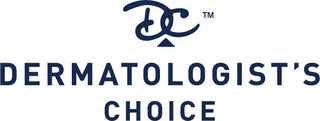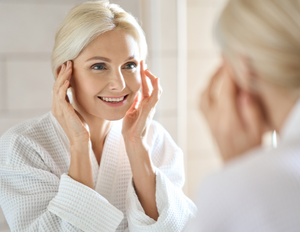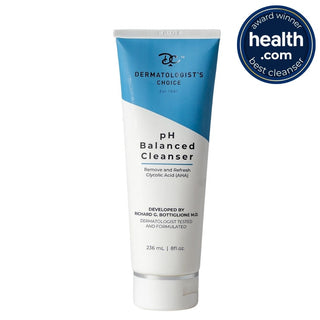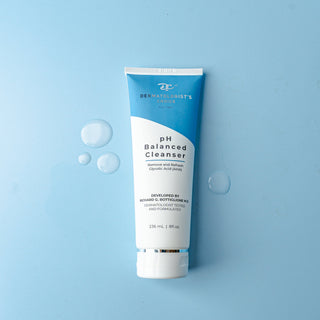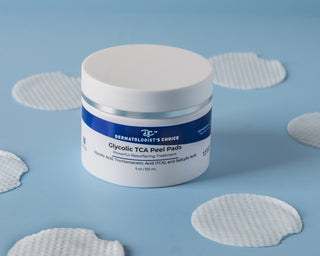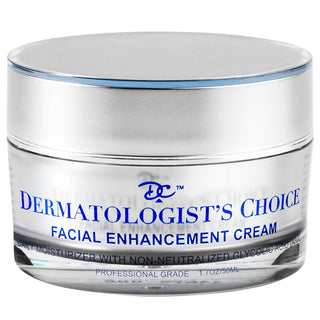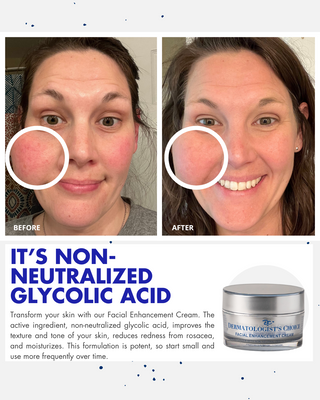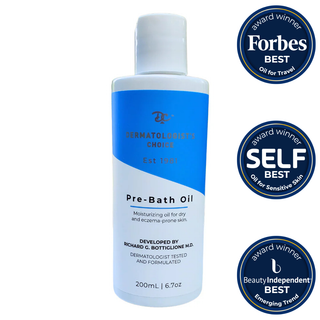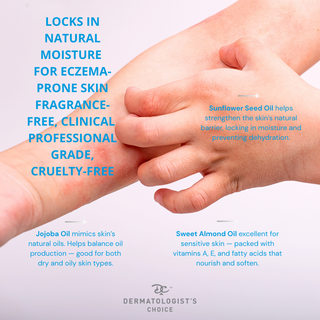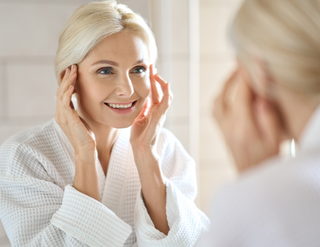
In the relentless pursuit of clear and radiant skin, those grappling with acne often find themselves navigating a labyrinth of skincare products and treatments. Among the myriad solutions available, various acids have emerged as powerful allies in the battle against acne. From salicylic to lactic, these acids offer unique benefits for skin health. However, when it comes to the most effective and transformative acid for acne-prone skin, glycolic acid stands out as a shining star. We'll delve into the world of skincare acids, exploring their individual merits, and ultimately, unveiling why glycolic acid reigns supreme in reducing acne and achieving a clearer complexion.
Glycolic acid is an example of an acne-fighting acid. This alpha hydroxy acid (AHA) is derived from sugarcane and can help those with frequent breakouts or other skin concerns.
Don’t go scavenging the aisles for glycolic acid just yet. There’s a lot to consider, including if it's a true active acid and if it’s right for your skin. Keep reading to find out more.
When applied to the skin, glycolic acid works to break the bonds between the outer layer of skin cells, including dead skin cells, and the next skin cell layer. This creates a peeling effect that can make the skin appear smoother and more even.
For people with acne, the benefit of glycolic acid is that the peeling results in less “gunk” that clogs the pores. This includes dead skin cells and oil. With less to clog the pores, the skin can clear, and you’ll usually have fewer breakouts. Glycolic acid can also affect the outer skin barrier, helping it retain moisture for overall healthier skin. This is an advantage for acne-prone skin.
Research from 2018Trusted Source found that glycolic acid has antibacterial and antioxidant activity, which can also help improve your skin’s appearance when you have acne. Glycolic acid can also thicken skin by stimulating collagen growth.
Glycolic acid is available in several forms, including over-the-counter (OTC) and prescription treatments. These include:
- face washes
- lotions
- peels
- serums
- skin care pads
Traditional wisdom is to start small, unless your dermatologist directs otherwise. You may wish to try a glycolic acid cleanser. We recommend the pH Balanced Cleanser by Dermatologist's Choice.
There are a few things to remember when using glycolic acid.
First, glycolic acid is an example of chemical exfoliation The acid can penetrate deeper and produce greater exfoliation over time. It’s not a scrub which is a form of physical exfoliation and actually more harmful to the skin and not recommended. It is not recommended to use physical scrubs like beads, sugars, or salts to exfoliate when also using glycolic acid this can leave micro-tears on your skin causing more damage. Your face may feel too sensitive otherwise too.
Speaking of sensitivity, you also don't have to use multiple glycolic acid-containing products. Consistent use of one product with occasional spot treatments can help to keep your skin clear. We recommend the Glycolic Peel Cleansing Pads treatment.
Sometimes, your dermatologist may recommend a stronger, in-office peel or prescription if you have severe acne and over the counter products are not clearing up the acne problem. First, try over the counter glycolic acid products like the Glycolic Peel Cleansing Pads or other Dermatologist's Choice Products.
Those with dry or sensitive skin types may find glycolic acid is too irritating for their skin. In this case, start with a mild concentration of active glycolic like a glycolic toner or a pH Balanced Cleanser with glycolic. Another great option is to use a glycolic cream which helps limits dryness and still activates cell turnover. If you do experience dryness and redness after using glycolic, this is typically normal as the glycolic is an exfoliant. Apply moisturizer to sooth the skin. Then restart application of glycolic acid once a week for three weeks. Increase application as your skin tolerates.
Glycolic acid isn’t the only acid in town. There are several other AHAs and natural acids that manufacturers use in their products. Here’s a look at them.
Hyaluronic acid
Hyaluronic acid is what doctors call a humectant. This acid attracts water to the outermost layers of skin to help them look and feel more hydrated. This acid isn’t an exfoliator like glycolic acid is. Instead, it’s used to improve skin softness.
Lactic acid
Lactic acid is a natural AHA made from acids that milk produces when it sours. This acid works similarly to glycolic acid, because it promotes exfoliation by dissolving bonds with dead skin cells. Lactic acid’s molecules aren’t as small as glycolic acid. Therefore, it may not penetrate the skin as well as glycolic acid.
Salicylic acid
Salicylic acid is a beta hydroxy acid (BHA) that cosmetic manufacturers harvest from tree bark. The difference between BHAs and AHAs is oil and water. AHAs are water-soluble. So water can neutralize them if you experience burning or discomfort when applied. BHAs are oil-soluble. As a result, they mildly penetrate into an oil-filled pore to reduce buildup. Glycolic acid however will go deeper into the skin to help clear more effectively. Salicylic acid is slightly effective on oily skin and when you have blackheads in addition to acne pimples. Using both glycolic and salicylic acid can be effective acne fighters.
A final word on acids
While there are other acids and ingredients available that promise to improve skin cell turnover, glycolic or TCA acid is the most effective for at home use. It's worth noting some dryness and redness may appear if used too often. This is not always something to be concerned about as it is normal for glycolic or TCA acid to exfoliate the skin and that's what you want it to do to clear out the pores and reduce acne. If you notice your skin becoming dry, red, or irritated after using glycolic acid or other acids, apply an oil-free moisturizer like the Hydrating Complex. Let it clear up then slowly reintroduce the acid to your skin. This will help the skin grow a tolerance and start to see anti-acne results.
Salicylic acid and glycolic acid can pair well together as spot treatments like in the Glycolic Peel Cleansing Pads by Dermatologist's Choice. But retinol won't do much since it has very little potency and is inactive. The acid or ingredient should be active if you expect to see anti-acne results. One way to tell is if you feel the tingle or sting when you apply the acid. Dermatologist's Choice products use active ingredient formulations and are dermatologist tested.
In addition to acne, dermatologists use glycolic acid to treat the following skin conditions:
- age spots
- hyperpigmentation
- melasma
- scars
- skin roughness
These different uses make glycolic acid a versatile ingredient for those seeking to improve their skin’s appearance.
You can start with over the counter products like the Glycolic Peel Cleansing Pads from Dermatologist's Choice which have the active glycolic acid but if your acne is more severe you may need additional prescriptions and a stronger treatment from a dermatologist.
According to a 2013 reviewTrusted Source, glycolic acid peels of between 30 and 70 percent can improve the appearance of acne and acne scarring. These higher concentration peels are done by dermatologists and a effective treatment for reducing acne.
What does glycolic acid do to your face?
Glycolic acid can break the bonds between the outer skin layer and the one below it. Dina D. Strachan, MD, a board certified dermatologist, says it can help shed dead skin cells, making it an exfoliant. Strachan notes other benefits include collagen growth stimulation and hydration.
Is it OK to use glycolic acid every day?
Richard Bottiglione, MD, a board certified dermatologist and the founder of Dermatologist’s Choice Skincare, says this depends on the concentration of what your skin can tolerate. He says daily use is often beneficial for anti-aging and acne-fighting benefits, but everyone is different.
“You can determine how often and the concentration you want to use based on the results you desire and your skin’s tolerance to the non-neutralized glycolic, try a glycolic product on your forehead if you feel the tingle and get a little redness or dryness that's ok. With continued use the skin will grow a tolerance to the active glycolic acid and anti-acne results will begin to appear.” Bottiglione suggests.
Glycolic acid is a multitasking skin care ingredient that can help fight acne and improve your skin’s appearance. Due to concerns about irritation, it’s best to talk with a dermatologist before you start using it and take it slow when first applying glycolic.
Starting with lower percentage formulations of active non-neutralized glycolic acid can help your skin adjust and reduce irritation risks.
Start incorporating Glycolic Acid into your skincare routine with the Acne: Advanced Set by Dermatologist's Choice today.
